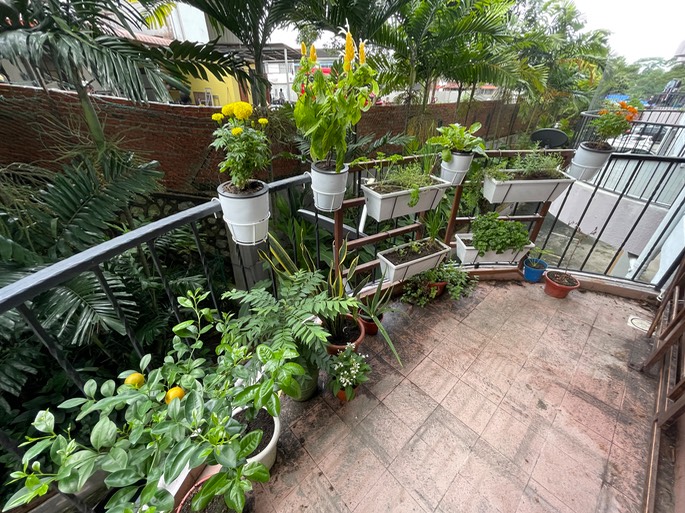
Back in July 2020, my tiny balcony was transformed by the addition of two balcony units from Edible Farms by Radiant - EDGE. The 4 white troughs contain herbs and veg to brighten up my cooking during the ’stay at home’ periods. I’ve subsequently added some flowering plants and friends have given me cuttings of non-edible plants. I have learnt that my green fingers are a little faded, so there are have a few deaths along the way, but that is the nature of gardening.
In January, I got quite excited finding flowers on my kalamansi lime tree. These flowers turned into tiny fruits which have continued to grow (photo left). Maybe not enough limes for a margherita, but I still enjoy watching their progress. I have recently been spending more time tending my garden, afterall we are supposed to 'stay at home’ and I can’t even go out to the park, so I have been paying more attention to the greenery. Recently I noticed a white powder on the plant (photo right) and decided to investigate.

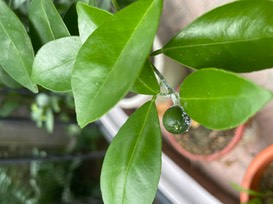
And then I noticed this moth-like creature, with its head is facing downwards. It turns out this is a leaf hopper. It didn’t care to hop away when I nudged it but it wasn't there today.
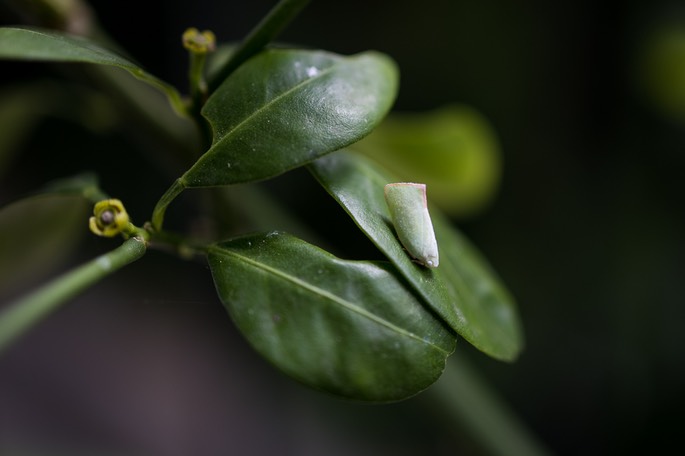
And then I noticed this….
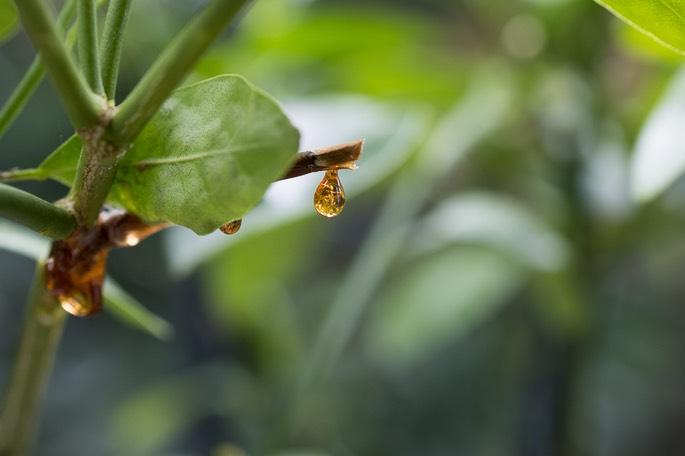
This golden drop is called ‘honeydew’ and it is excreted from the anus of leaf hoppers! This honeydew encourages the growth of a fungus called white sooty mold, and this is the white stuff I noticed first which led me to investigate my lime tree in more detail.
Now you may be asking why a tiny moth would bother to produce all this honeydew? Apparently, it is used to attract other insects which in turn maintian the territory of the first insect. Frequently, the honeydew is made to attract ants, and it is the ants which drive away predators or competitors.
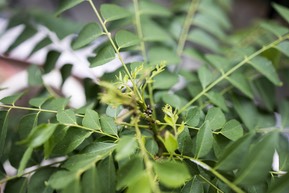
Now this is the only moth I've seen, and the amount of honeydew on the plant seemed disproportionate to the size of the moth, so I examined the neighbouring plant. Next to the lime tree I have a curry tree, although the term ‘tree’ is a bit of an exaggeration at the present! I’d noticed before that the growing tip of the curry tree was a hive of activity for ants, and I'd noticed other things there which I could not recognise. I had previously tried to flush these away with some water, but only ended up plucking out the growing tip. It seems that the curry tree didn’t mind and kept growing. So could any of this be responsible for the honeydew?
Now here is where I really need a gardening expert to help identify the insects I am about to show you. The quality of the photos isn’t the best given the size of these critters, and I’ve had to magnify the images quite considerably.


This tiny creature likes to live on the underside of the leaves, so I hadn’t spotted it before (see a group of them in the photo right).
And then there are these brown, or orange, or mixed being living amongst the ants on the stem of the plant (photo below). I know I should try and get a better photo of these, but I’ve hurt my back and it’s a bit tricky getting down to the same level as these animals.
According to my prelimiary search of the internet, these all belong to the family of soft scale insects, and these are known to excrete honeydew.

Now I guess I’d better find some to destroy these insects before they destroy my plants. Seems a bit of a shame, but…
And now for something more beautiful… images of my garden flowers.
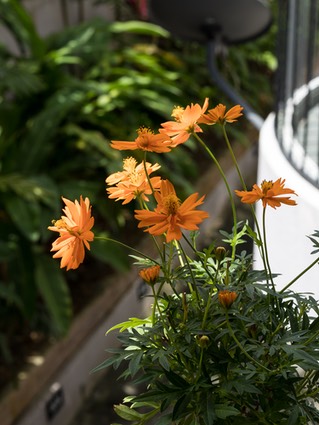


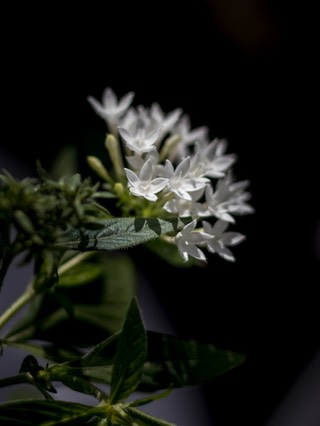

Click here to return to Travels in Malaysia 2021.
Click here to return to Helen Gray’s homepage.